

Simple Machines:
These devices were all in common use for centuries before Leonardo's
time. Each one makes work easier to do by providing some trade-off
between the force applied and the distance over which the force is
applied.

Wheel and Axle
In this machine a wheel or spoke is locked to a central axle so
that when one is turned the other must turn. A longer motion at
the edge of the wheel is converted to a shorter more powerful
motion at the axle. In reverse, a short powerful force at the axle
will move the wheel's edge a greater distance.
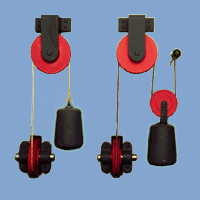
Pulley System
A single pulley simply reverses the direction of a force. When two
or more pulleys are connected together, they permit a heavy load
to be lifted with less force. The trade-off is that the end of the
rope must move a greater distance than the load.
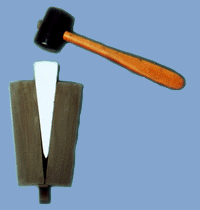
Wedge
A wedge converts motion in one direction into a splitting motion
that acts at right angles to the blade. Nearly all cutting
machines use the wedge. A lifting machine may use a wedge to get
under a load.

Screw
A screw is a central core with a thread or groove wrapped around
it to form a helix. While turning, a screw converts a rotary
motion into a forward or backward motion.
 Lever
Lever
A lever is a stiff rod that rotates around a pivot point. Downward
motion at one end results in upward motion at the other end.
Depending on where the pivot point is located, a lever can
multiply either the force applied or the distance over which the
force is applied.
Other Elements of Machines:
Though these devices were also used in machines in Leonardo's time,
he experimented with them and made changes to improve how they
worked. He also combined them in many exciting new ways to create
machines and inventions
that had never been seen before.

Gears
Gears are toothed or pegged wheels meshed together to transmit
motion and force. In any pair of gears the larger one will rotate
more slowly than the smaller one, but will rotate with greater
force. Each gear in a series reverses the direction of rotation of
the previous gear.
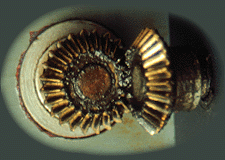
Bevel Gears
Gears that mesh at an angle change the direction of rotation.
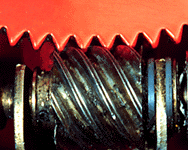
Worm Gear
A worm gear is a combination of a gear meshed with the threads of
a screw. This combination changes the direction of turning motion
by ninety degrees. Worm gears also decrease the speed of turning
from screw to gear and increase its force.
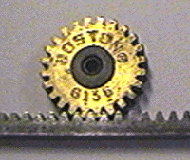
Rack and Pinion
A single gear, the pinion, meshes with a sliding toothed rack.
This combination converts rotary motion to back and forth motion.
Windshield wipers in cars are powered by a rack and pinion
mechanism. A small pinion at the base of the wiper meshes with a
sliding rack below.
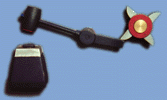
Cam
A cam is a wheel with shaped bumps on it. Cams are often connected
to rods, levers, or springs. In the gravity trip hammer shown
here, the bumps on the turning cam push down on the end of the
lever making it raise the hammer again and again.
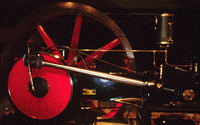
Crank and Rod
The crank is a wheel with a pivoting arm attached near its edge.
The arm is attached by a hinge to a rod. When the crank turns, the
rod is pushed back and forth. Alternatively, if the rod is pushed
back and forth at the right speed, the crank will turn. The crank
and rod shown here are part of giant steam engine.
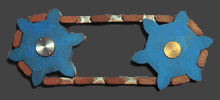
Chains and Belts
A chain or belt connects two separated wheels so that one turns,
the other will turn in the same direction.
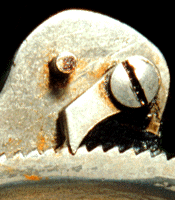
Ratchet
A ratchet is a device that allows a wheel to turn in only one
direction. The ratchet wheel has specially shaped teeth. A bar on
a pivot called the "pawl" is fixed above the ratchet wheel. The
pawl slides over the teeth of the ratchet in one direction, but
blocks the motion of the teeth if the wheel turns in the other
direction.
|
Now that you have seen the various
elements of machines, you can try to figure out which ones
are used in some common devices by going to the
Gadget
Anatomy
page.
|


Science Learning Network / email: sln@mos.org
/ © 1997 The Museum of Science






 Lever
Lever






